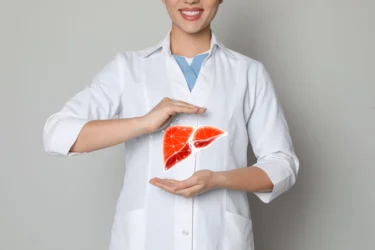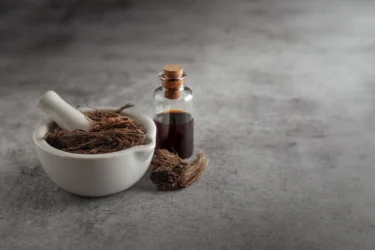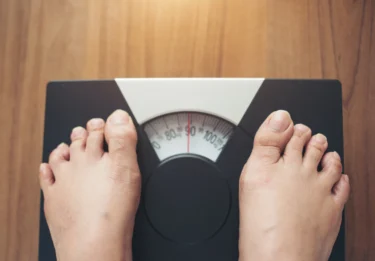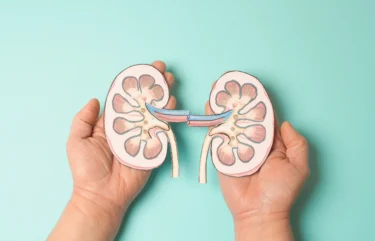“Kacchi kairi” or raw mango is reminiscent of our childhood days for many of us. The name itself is sufficient to stimulate our taste buds. The scientific name of mango is “Mangifera indica”, and it belongs to the family Anacardiaceae. Be it the tangy kacchi kairi (raw mango) or the sweet ripened fruit, mangoes are one of the most relished fruits in India.
There are over 30 different species of mango, each with a unique taste, colour, size, and shape. Every part of the mango tree has some medicinal properties. For example:
Various parts of the tree have also been used as antiseptic, dentifrice (tooth powders and toothpaste), diaphoretic (to increase perspiration), and vermifuge (anti-helminthic).
The taste and numerous health benefits justify why mango is called the “King of Fruits.” Let’s find out more about this nutrient-rich fruit.
Raw mango is a great source of nutrients, rich in vitamins, minerals, dietary fiber, and carotenoids. Here are the nutritional components of raw mango per 100 grams2:
Did you know?
Research has found that the consumption of raw mangoes may show the following properties:
Some of the potential benefits of raw mango are described as follows:
Raw mango is high in fiber and low in calorie content and can help manage weight. Yanni et al. conducted a study5 in 2022 to assess the effect of mango consumption on weight-related health outcomes. It was found that the male adults who consumed raw mangoes showed a lower Body Mass Index (BMI), waist circumference and body weight compared to the non-consumers. This may indicate that the consumption of raw mangoes may help in weight management. However, more studies to support these claims are needed3,4.
Raw mango is rich in antioxidants like polyphenols and mangiferin. A review6 conducted in 2017 stated that mangiferin helps inhibit cell proliferation and apoptosis (cell death). It is known to interfere with cell cycle regulation and thus, the carcinogenic pathway. This may indicate that raw mangoes can help in managing cancers. However, human studies are required to ascertain these claims.
Raw mangoes may help in avoiding liver problems by stimulating bile production. Bile is a juice produced by the liver that helps break down fats and aids digestion. It helps in the removal of drugs and toxins from the body. Additionally, mangiferin, an antioxidant in raw mangoes, has a hepatoprotective function. This may indicate that consuming raw mangoes may help improve the liver’s health. However, no human studies have been conducted so far to support these claims3,5.
Raw mangoes contain a unique antioxidant, mangiferin, which helps balance triglycerides, cholesterol, and fatty acids. Additionally, the fibre, potassium, and vitamin content in mangoes may help reduce the risk of cardiac diseases. Therefore, there is a possibility that the consumption of mangoes can help promote a healthy heart, but we need more human studies to support these claims3.
Due to the presence of nutrients like Vitamin A, Vitamin C, Vitamin E, proteins, iron, zinc, etc., raw mangoes are a good option for nourished hair and healthy skin. Furthermore, vitamin C is important for forming collagen, which strengthens the hair and skin. In addition, raw mangoes may help improve hair growth and produce sebum, which is known to moisturise the scalp and keep the hair healthy. This indicates that the consumption of raw mangoes may exert a beneficial effect on hair and skin. However, there needs to be more studies to support these claims in humans3.
Raw mangoes are rich in Vitamin C, which may help reduce the risk of various blood disorders like haemophilia, anaemia, and blood clot formation. Additionally, raw mangoes may help increase the elasticity of blood vessels and aid the hematopoiesis process (formation of new blood cells). This indicates that consuming raw mangoes may help manage blood disorders. However, as the scientific evidence supporting these claims is limited, it is best to seek a professional opinion if you might be suffering from a blood disease3.
Though there are studies that show the benefits of raw mangoes in various conditions, these are insufficient and there is a need for further studies to establish the true extent of the benefits of raw mangoes on human health.
Did you know that one cup (165-gram) of sliced, raw mango contains approximately 100 calories? Mangoes are not only delicious but also provide a satisfying and nutrient-rich snack option5.
Dr. Siddharth Gupta, B.A.M.S, M.D (Ayu)
Raw mangoes can be used in the following ways:
You must consult a qualified doctor before taking any herbal supplements. Do not discontinue or replace an ongoing treatment of modern medicine with an ayurvedic/herbal preparation without consulting a qualified doctor.
Individuals with a latex allergy should exercise caution when consuming mangoes, as they may experience a cross-reaction. This means that the proteins in mangoes can trigger an allergic response in those who are sensitive to latex7.
Dr. Rajeev Singh, BAMS
A few side effects related to the consumption of raw mango include:
However, if you experience any adverse reactions to raw mango, discontinue its intake and immediately contact a doctor or your Ayurvedic physician who has prescribed it to you. They will be able to guide you appropriately for your symptoms.
Also Read: Red Rice: Uses, Benefits, Side Effects & More
Eating raw mango is okay if it is taken in moderate amounts. However, general precautions must be followed while consuming raw mango. The majority of the precautions are:
Also Read: Bakuchi: Uses, Benefits, Dosage & Side Effects
Raw mangoes inhibit the cytochrome P450 enzymes, which are known to metabolise certain drugs like warfarin, propranolol, theophylline, etc. Inhibition of these enzymes can alter the blood concentration of drugs metabolised by this pathway. Therefore, you must always seek the advice of your doctor about the possible interaction of raw mangoes with other drugs, and follow the prescription thoroughly, as they will know your health condition and other medications you are taking.
Also Read: Peanuts: Uses, Benefits, Side Effects and More
The scientific name of mango is “Mangifera indica”, and it belongs to the family Anacardiaceae1.
Mango is known as the king of fruits1.
Raw mangoes contain a high level of carotenoids, which may help improve eyesight. However, there are no human studies which have proven these claims. So, it is advised to consult a doctor for proper treatment.
Consumption of raw mangoes in excess can result in stomach pain and diarrhoea. Some people may experience allergies or throat pain after consumption of certain raw mango varieties.
Since raw mangoes can inhibit the cytochrome P450 enzymes, medicines which are metabolised by this pathway may show an unwanted reaction. So, it is advised to consult a doctor for proper advice.
Disclaimer: The information provided here is for educational/awareness purposes only and is not intended to be a substitute for medical treatment by a healthcare professional and should not be relied upon to diagnose or treat any medical condition. The reader should consult a registered medical practitioner to determine the appropriateness of the information and before consuming any medication. PharmEasy does not provide any guarantee or warranty (express or implied) regarding the accuracy, adequacy, completeness, legality, reliability or usefulness of the information; and disclaims any liability arising thereof.
Yoga has evolved 5000 years ago from the Indus Valley (current day Pakistan), the earliest known human civilization. The renowned Hindu philosopher and yoga teacher, Patanjali, mentioned the philosophy of classical yoga in his text “Yoga Sutra”. “Yoga sutra” is believed to have a history between 200 BC and 300 AD. Yoga is a treasure of physical and mental techniques that can help maintain holistic health1.
Nowadays, yoga has become a symbol of standard living and has become tremendously popular since its entry into the Western world. Swami Vivekananda’s efforts to spread Eastern Hindu philosophy in the late nineteenth and early twentieth century led to the acceptance of yoga in the West1.
Adopting and maintaining particular bodily postures and the related regulated breathing methods are the cornerstones of yoga practice. People are more concerned about their well-being now than ever before. Therefore, asanas are popular for maintaining overall health. It has been demonstrated that the hormonal profile is balanced and glandular activity is boosted after performing the asanas2.
Ustrasana, one of the hath yoga asanas, helps rejuvenate the body and undo the daily damage done by a sedentary lifestyle. Continue reading to know all about it!
‘Ustra’ means camel and ‘asana’ means posture or seat. Therefore, Ustrasana is often referred to as the camel pose3.
Camel Pose or Ustrasana is a chest-opening backbend that is energizing and beneficial. It is a wonderful addition to your sequence since it prevents slouching and eases lower back stiffness4.
The camel pose yoga allows spine extension without supporting body weight with your arm, unlike chakrasana (wheel pose). The wheel pose is a total body stretch backbend posture that requires more stamina and determination. The camel pose is friendlier and more accessible to yoga learners, especially beginners5.
keeping a pillow below the knees is advised as Ustrasana can cause discomfort in the knees. It is important to take deep and slow breaths while approaching the backbend.
Ustrasana has seven variations6:
We must follow proper techniques to perform the camel pose to obtain maximum health benefits. It is essential to maintain breathing and refrain from putting any strain or load on the lumbar region of the spine i.e., the lower back area. Bhujangasana (Cobra pose), Salabhasana (Locust pose), Anjaneyasana (Low lunges), Setu Bhandha Sarvangasana (Bridge pose), Urdhva Mukha Shvansana (upward facing dog pose) can be performed as preparatory poses before approaching Ustrasana4.
The steps to do the camel pose are as follows5:
Avoid crunching the lower back and squeezing the buttocks. Knees should only be opened up to hips’ width. Ustrasana or camel pose should be performed in the presence of a trained yoga practitioner4.
Do You Know?
The Ustrasana can have several benefits. Some of them are mentioned below:
The most important part of the body involved in singing is the throat and chest. A throat muscle called the larynx houses the vocal cord, which allows us to change the pitch while singing. Since ustrasana may help in the expansion of the rib cage and greater breath control, it may be considered a singer-benefitting asana. Effects may help singers to balance the abdominal and thoracic pressure to sing the full set of musical notes in a single breath. Hutton, 2013, in his research paper, mentioned that an intense stretch of the esophagus with a flexible spine during Ustrasana may also benefit singers3.
Most people spend their day sitting down or slouching and bending their spine forward. While performing the ustrasana, the frontal regions of the body, especially the chest, belly and quadriceps, are stretched which may help improve the posture of the body. The camel pose may also help increase spinal mobility by flexing the back in the opposite direction5.
Dipak Kr Halder conducted a study on ‘Energy expenditure during Ustrasana’. He examined the metabolic changes during the camel pose and compared it with the supine posture (lying on the back facing the sky or ceiling). Halder concluded that there was an increase in oxygen consumption from 14.18% to 293%, i.e., approximately by 86.6 %, while performing ustrasana. The carbon dioxide output was also increased. These data suggest that camel pose or ustrasana may allow lung expansion due to increased consumption of oxygen. The expanded lungs can help in increasing the volume of oxygen. This leads to an increase the oxygen flow in the body. An increase in oxygen flow helps in respiratory rate and reduces the efforts required by our body to put into breathing2.
The major goal of Ustrasana is focusing on the breath. Practicing ustrasana stretches the chest and may help in opening the thoracic cavity. The thoracic cavity includes the organs and tissues above the diaphragm and below the neck like lungs, trachea, heart, oesophagus, etc. The slow and deep breaths during the camel pose can help the person familiarize sensations of thoracic muscles like heart-beat and lung expansion. Camel pose may also give suitable stretching to the abdomen and its side resulting in the opening of muscles that are often tight due to our sedentary lifestyle3,5.
The camel pose might be useful for stretching and extending the front, back and neck muscles of the body. It strengthens the chest, abdomen and quadriceps muscles and tones the glutes and hamstrings (back of thigh) muscles. Ustrasana may allow the cervical tension to be reduced while stretching the neck in the backbend. It may also aid in strengthening the shoulders, arms, back, and legs muscles. This may help in decreasing the lower backache. The stretching of muscles may decrease pain in associated muscles and prevent slouching and bending3,4,5.
A hernia is associated with weak muscles, stress, anxiety, weight gain, muscle strain, and indigestion. Ustrasana is potentially beneficial in decreasing anxiety, stress, improving digestion and other factors mentioned above. Therefore, practicing ustrasana, in the presence of a certified yoga trainer, may help in core strengthening the core and relief from stomach and intestinal hernia8.
Also Read: Benefits of Agni Mudra and How to Do it By Dr. Ankit Sankhe
Having bad menstrual cramps? Relieve them by practising yoga asanas like Ushtrasana. Ushtrasana aid in stretching and opening abdominal muscles and might help in relieving tension in the lower back which may ease the menstrual cramps7.
Dr. Rajeev Singh, BAMS
The camel pose or ustrasana should be performed keeping the risks and contraindications in mind.
Improve your kidney health by practising Ushtrasana. Ushtrasana might facilitate abdominal compression and helps in toning internal organs and aid in blood circulation9.
Dr. Siddharth Gupta, B.A.M.S, M.D (Ayu)
Ustrasana or camel pose is a more convenient backbend yoga pose that may help strengthen muscles and maintain breathing. It is a flexible pose with variations that can be attained using props and different arm positions. Ustrasana is a mild form of postural exercise that, when practiced, induces deeper relaxation. It is important to learn this yoga asana under the supervision of trained yoga professional.
Also Read: Benefits of Ujjayi Pranayama (Ocean Breath) and How to Do it By Dr. Himani Bisht
Ustrasana is a chest-opening backbend yoga that stretches the front body. It is usually performed on the knees with thighs vertical to the mat. The spine, chest and neck are elongated and twisted backwards.
The potential benefits of Ustrasana include relaxing the body, opening the thoracic and abdominal cavity, and strengthening the muscles. It may help in improving asthma, hernia, headache, and lower back pain.
The Ustrasana is a combination of two Sanskrit words named namely “ustra” and “asana”. Ustra in Sanskrit refers to the camel. The backward twisting of the spine holding the heels in Ustrasana resembles the camel position and is therefore often referred to as the camel pose3.
Ustrasana should be avoided in patients suffering from knee, chest or shoulder injuries. It should also be avoided by those who underwent abdominal surgery recently.
Ardh ustrasana or half-camel pose is a variation of ustrasana, which involves only one hand touching the heel while the other is facing towards the sky.
Disclaimer: The information provided here is for educational/awareness purposes only and is not intended to be a substitute for medical treatment by a healthcare professional and should not be relied upon to diagnose or treat any medical condition. The reader should consult a registered medical practitioner to determine the appropriateness of the information and before consuming any medication. PharmEasy does not provide any guarantee or warranty (express or implied) regarding the accuracy, adequacy, completeness, legality, reliability or usefulness of the information; and disclaims any liability arising thereof.
Yoga is a combination of specific breathing techniques (pranayama), physical postures (asanas), relaxation, and meditation that helps you connect to your mind, body, and soul1.
Though Yoga is a very traditional practice, it is considered more as a science than just philosophy or religion. Yoga believes that every human being exists in this world in not just one (physical dimension) but five dimensions; pranamaya kosha (vital body), vijanamaya kosha (intellectual body), manomaya kosha (psychic body), annamaya kosha (physical body) and anandamaya kosha (causal body). They altogether aim at bringing about a balance in all aspects.
There are certain asanas in Yoga that, apart from keeping illness at bay, give more benefit to some specific organs. One such yogic posture is the Vrikshasana, which may be beneficial to one of the vital organs of the body, the brain2. However, the benefits need further studies to be proven.
Did you know?
Vrikshasana is a standing pose. The name is derived from the word ‘Vṛkṣa’ meaning tree. So, it is also called the ‘Tree pose’. This asana is named so that the final posture looks like the shape of a tree3. It helps us achieve peace of mind and benefits those who are facing problems such as anxiety and depression. It increases concentration, immunity, and stamina. Moreover, it helps to build self-esteem and self-confidence. It has a calming and relaxing effect and stretches the body from head to toe.
Vrikshasana is one yoga posture underrated and not well-known for people with diabetes! People with diabetes are prone to altered body orientation due to neuropathy. Regular practice of Vrikshasana is believed to build balance and coordination among these people6.
Dr. Siddharth Gupta, B.A.M.S, M.D (Ayu)
Any posture in Yoga must be done using the correct technique, to get the maximum health benefit. Following the proper method also helps to avoid any injuries. The steps for doing Vrikshasana are as follows:
Did you know Vrikshasana might aid in premenstrual symptoms? Regular practice of Vrikshasana might help women with handling premenstrual symptoms such as muscle cramps in the abdomen and legs. It is believed that Vrikshasana strengthens the leg muscles and tendons10.
Dr. Rajeev Singh, BAMS
Vrikshasana is a common standing posture. It is the first standing balancing posture that most beginners learn5. This one-legged pose has various benefits as follows:
Being balanced in your body is very essential to have a sense of stability. Vrikshasana may help improve the strength of the muscles that help one keep erect and balanced. The extended arms in this posture help challenge the muscles that control body position. Vrikshasana may specifically stimulate the abductor group of muscles of the hip joint, which are the muscles that help move the thigh away from the body. This group includes the superior gluteus maximus, gluteus minimus and medius. This benefit is obtained even if the tree pose is done with wall support, using one or both arms for the support. It may prove to be valuable to beginners in the field of Yoga, who have stability issues.
This pose may especially involve the ankle muscles, rather than the thigh, to bring about better balance and it also improves blood circulation. Thus, it may benefit in conditions that may pose stability issues like cardiovascular disease, rehabilitation after injuries, and managing the symptoms of ADHD such as balance, stability, and more. You may gain lateral stability by practicing the Tree pose by standing close to a wall or chair5,6,7.
It may be beneficial in calming down the entire nervous system bringing about a sense of relaxation2. It may be valuable in improving the proprioception ability of a person, which is the ability to sense the body’s movements, position, and action8. Vrikshasana also helps to improve concentration, generate calm and balance the nervous system.
Due to this effect, it may help in conditions like depression and anxiety. In these conditions, the levels of a stress hormone called cortisol is elevated. Studies5 have demonstrated reduced levels of cortisol in those who practice yoga such as vrikshasana.
Balancing on one leg and assuming the final Vrikshasana posture requires focus. So, practicing this asana may help in increasing concentration levels. It was found in a study8 by Samantha et al., 2019 that Vrikshasana was beneficial to developing a concentration in patients with Attention Deficit Hyperactivity Disorder (ADHD) which is otherwise presenting as difficulty in concentration9.
Vrikshasana calms and relaxes the central nervous system and stretches the entire body. It strengthens the legs opens the hips and improves your neuromuscular coordination and endurance. It may thus be helpful for those who suffer from sciatica (nerve pain in the leg)2,4.
Yogic asanas, though largely beneficial, should not be sought as the go-to treatment for health issues. You must always consult a medical practitioner for your health issues so that he/she can examine you, assess your condition, and then provide an appropriate treatment protocol. Besides, to avoid any injuries, it is best to practice Yoga under the guidance of a qualified and trained Yoga expert.
Not just legs, Vrikshasana is believed to strengthen the shoulders as well. Vrikshasana involves raising the hands up and stretching which might stretch the shoulder muscles10.
Dr. Smita Barode, B.A.M.S, M.S.
Also Read: Benefits of Vayu Mudra and How to Do it By Dr. Ankit Sankhe
Some risks and precautions related to Vrikshasana are:
Any yoga posture must ideally be practiced under the supervision of a Yoga expert who can advise you on the safety of that particular asana for you.
Also Read: Benefits of Padmasana and How to Do it By Dr. Himani Bisht
Vrikshasana or the tree pose is a common standing Yoga asana. It has numerous benefits for the brain, immunity, spine, and stability. One may practice this posture regularly, preferably under the guidance of a Yoga trainer, who will advise you regarding the necessary precautions to be taken.
Also Read: Benefits of Anulom Vilom and How to Do it By Dr. Ankit Sankhe
The name Vrikshasana is derived from the word ‘Vṛkṣa’ which means tree. Hence, it is also referred to as the Tree pose3. It is the first single-legged standing pose for beginners5.
Steps in Vrikshasana are: Stand erect with your legs apart. The distance between them should be about 2 inches. Focus on any point straight ahead. Exhale, bend your right leg, and place the sole of the right foot on the left inner thigh, with the heel of your right leg touching the perineum. Now, breathe in and raise your arms, joining your palms together to form the Namaste Mudra. Hold this stance for 10-30 seconds. Breathe normally while holding the pose. Now, exhale and bring your arms down. Bring your right leg too to the starting position. Repeat the same method on the left side3.
Vrikshasana must preferably be done under the supervision of a qualified and experienced yoga teacher who can advise you on the number of times that you may do this pose safely.
Senior citizens who have instability issues may show an improvement in lateral stability by practicing the Tree pose while standing close to a wall or chair5. To avoid the possibility of falling, it is recommended that older adults practice this pose under the guidance of a Yoga expert.
While Vrikshasana is said to help people having instability issues5, it is contraindicated in those who might have giddiness3. If you are suffering from vertigo, it is best to consult a qualified medical professional before you start practicing this Yoga posture.
Disclaimer: The information provided here is for educational/awareness purposes only and is not intended to be a substitute for medical treatment by a healthcare professional and should not be relied upon to diagnose or treat any medical condition. The reader should consult a registered medical practitioner to determine the appropriateness of the information before consuming any medication. PharmEasy does not provide any guarantee or warranty (express or implied) regarding the accuracy, adequacy, completeness, legality, reliability or usefulness of the information; and disclaims any liability arising thereof.
Yoga is a rich treasure with techniques beneficial for physical, mental, and spiritual well-being. In this era of expensive pharmacotherapy with innumerable side effects, it is difficult to manage diseases like hyperthyroidism or hypothyroidism, cardiovascular conditions, obesity, and diabetes.
Therefore, introducing physical exercises like yoga can gradually hasten the recovery process. Though it evolved and flourished in India, the introduction of yoga in Western culture gained much popularity and has become a statement of an optimum lifestyle in the upper-middle classes1.
Yoga involves a lifestyle that requires maintaining certain postures (Asanas) along with controlling breathing, thoughts, and enchanting mantras (recital phrases), unlike other exercises that focus on muscle stress, repetitive movements, and heavy breathing. In yoga, body is relaxed and blood requirement is reduced. This is opposite to aerobics, zumba and other exercises that increase the workload on heart to pump more blood. Yoga triggers the neuronal hormones that add significant benefits to mental and spiritual well-being1.
One of the countless postures in yoga is the ‘Shoulder stand’, also known as Sarvangasana.
Did You Know?
Sarvangasana is a posture where the whole body is balanced on the shoulder and is therefore, also known as a Shoulder stand.
Sarvangasana constitute 3 words “Sarva”, “anga” and “asana”. “Sarva” means “all”, “anga” means body part and “asana” means posture. As the name indicates, Sarvangasana is the posture involving the whole body.
It is referred to as the Queen of asanas because it maintains the physical and mental health of an individual2.
Asanas that involve postural inversion are not part of traditional practice, as the three classic hatha yoga texts do not mention these postures. They have only recently gained more popularity with increased visibility through social networks3. It is the most effective way to streamline the body and mind. It may help in attaining peace, containment and happiness4.
Sarvangasana or shoulder pose is to be practiced in the presence of trained yoga professionals. The steps to be followed while performing this asana are:
Do not strain your body by holding the final position for long during the initial practice. Increase the duration gradually from three to five minutes. Perform Sarvangasana only once during the yoga session2.
By regularly practising Sarvangasana, you can improve your posture, relieve back discomfort, and enhance overall spinal health. I recommend practising Sarvangasana (Shoulder Stand Pose) to alleviate stiffness in the back muscles caused by poor posture or prolonged standing. This pose involves stretching and lengthening the back muscles, helping to release tension and improve flexibility7.
Dr. Rajeev Singh, BAMS
Sarvangasana offers several benefits to improve physical and spiritual health. Some of the potential benefits are:
Sarvangasana may improve the blood supply to the brain. There is an increased influx of blood to the brain during the shoulder stand position. This increased influx can also help in nourishing the hair and hydrating the scalp, thus helping in preventing hair loss and improving hair growth.
An increase in blood supply to facial muscles may lead to glowing skin. The greater blood flow may also help in keeping ourselves active and energized2.
Sarvangasana may help in decreasing the production of thyroxin hormone responsible for causing hyperthyroidism. The inverted position during shoulder stand allows the heart to pump the blood to the brain and the thyroid gland and helps in curing thyroid-related disorders. The potential benefit of the blood flow during Sarvangasana is on respiration, increasing the digestive and excretory processes, and strengthening the nervous system, which is controlled by the thyroid and parathyroid glands. When the thyroid gland functions properly, all of the above-mentioned systems of the body work effectively2.
Kumar et al. 2017 mention a study5 involving 20 patients with diabetes (increased glucose level) subjected to 40 days of yoga, involving sarvangasana as one of the postures, showed a decrease in glucose levels and changes in insulin levels. The shoulder stand pose improves the functioning of pancreas, responsible for insulin production. The enhanced insulin production may help in decreasing the risk of diabetes. The involvement of asanas or postures in daily life does not have any adverse effects, and can be used as an alternate means to improve health4.
The shoulder stand may help in increasing the blood pressure of patients with low blood pressure. A study6 conducted by Naidu, S.T. et.al., 2015 on postural inversion in yoga and its effects on cardiovascular parameters, mentions that there was an increase in diastolic and systolic blood pressure during the sarvangasana. The increase in blood pressure depends on various factors especially the population (healthy or on patients with blood pressure fluctuations) performing the sarvangasana3.
Over the years, I have found that practising Sarvangasana (Shoulder Stand Pose) can help counteract the pooling of blood in the legs and abdomen. This pose involves elevating the legs above the heart, which promotes return of the blood from the organs and improves overall circulation7.
Dr. Siddharth Gupta, B.A.M.S, M.D (Ayu)
Also Read: Benefits of Halasana (Plough Pose) and How to Do It By Dr. Himani Bisht
Some of the contraindications related to Sarvangasana are:
The important point to consider while doing postural inversion is to perform it smoothly and slowly and it should be only practiced with a trained yoga teacher.
Also Read: Benefits of Prana Mudra and How to Do it By Dr. Himani Bisht
Tension and stress are part of everyday life, but they should not affect the mind and body. Performing sarvangasana helps de-stress by relieving the pain and increasing the blood supply to all parts of the body. However, it is necessary to follow precautions while performing sarvangasana to avoid the associated physical risks. Given the rising popularity of postural inversions in yoga, through social media, it is important to do additional research on the benefits and risks.
Also Read: Benefits of Bhramari Pranayama and How to Do it By Dr. Himani Bisht
Sarvangasana is also known as “shoulder stand”. It is an inversion posture where the whole body is balanced on the shoulder2.
People suffering from high blood pressure, slipped disc, vertigo, atherosclerosis, cerebral thrombosis migraine, pregnant and lactating women and people with diabetic retinopathy and who have undergone surgery should avoid shoulder stand. Sarvangasana should also be avoided in patients suffering from cold, flu and sinus problems2.
For beginners, the final position of Sarvangasana or shoulder stand should be held for a few seconds. It can be gradually increased with the practice for about three to five minutes2.
The shoulder stand or Sarvangasana may help in improving blood circulation and digestion. It may also help in rejuvenating the body and maintaining balance and posture of the body. Sarvangasana may increase blood pressure, which can be used as a potential benefit for patients with low blood pressure4.
This asana should only be performed once at the end of completion of other asanas during the yoga session. An easy relaxing posture after performing sarvangasana or shoulder stand is Shavasana (corpse pose)2.
Disclaimer: The information provided here is for educational/awareness purposes only and is not intended to be a substitute for medical treatment by a healthcare professional and should not be relied upon to diagnose or treat any medical condition. The reader should consult a registered medical practitioner to determine the appropriateness of the information and before consuming any medication. PharmEasy does not provide any guarantee or warranty (express or implied) regarding the accuracy, adequacy, completeness, legality, reliability or usefulness of the information; and disclaims any liability arising thereof.
Gulkand (prepared with rose petals) can be used as a delicacy in several Indian dishes and soothes the tastebuds with its cooling effect. The Rose plant is a perennial bushy shrub with fragrant flowers and a sweet preserve of rose petals known as gulkand. The scientific name of the rose is Rosa damascena, and it belongs to the family Rosaceae. The major cultivation of roses is widely distributed in Europe, Middle East, North America, and Asia. Rose plants are often grown in houses, parks, and gardens. Rose petals are majorly used in perfumes, medicine, food industry and gulkand is prepared with rose petals only1,2. Let us discuss gulkand.
Below is the nutritional Components of Gulkand2
Gulkand may have the following properties:
The gulkand benefits are given below:

Gulkand may help to relieve pain. Studies on mice showed that plant ingredients like quercetin and kaempferol might be responsible for reducing pain. Antioxidants like flavonoids present in gulkand may be responsible for relieving pain1. However, further studies are required to know its exact mechanism and effect on humans. You must immediately consult your doctor if you experience unbearable pain for a prolonged period.

The essential oil and flavonoids in rose petals of gulkand may help in the case of seizures. Studies on mice showed that gulkand might delay the start of epileptic seizures (Brain disorder) and decrease the duration of tonic-clonic seizures1. Further studies on humans are required to know the action of gulkand for seizures. However, if you experience seizures, you must immediately consult your doctor instead of self-medicating.

Gulkand may be used to relieve cough. Studies on guinea pigs showed that gulkand may reduce the cough. Another study showed the relaxant effect of gulkand may fight against cough. However, further studies are required on humans to check the impact of gulkand against cough1. There is a possibility that a cough can be a symptom of other diseases. Therefore, if you had a cough for several days, you must consult your doctor.

Gulkand may improve heart function. Studies on guinea pigs showed that gulkand might increase the heart rate and contractility of the heart, thereby improving the function of the heart. However, further studies are required to check the effect of gulkand on the human heart1. If you experience any symptoms related to heart disease or have a history of heart disease, you must immediately consult your doctor.

Gulkand has many plant compounds present in it and the combined effect of several plant compounds in gulkand may additively act against virus replication1. However, further studies are required to check the effect of gulkand against HIV infections. HIV infection is serious; therefore, you must get diagnosed and get proper treatment instead of self-medicating.

Gulkand may act against bacterial infections due to its essential oil, rose absolute, and hydrosol. It may show anti-bacterial activity against a wide range of bacteria by inhibiting their growth1. However, further studies are required to check the anti-bacterial activity of gulkand on humans. If you have a bacterial infection, you must consult your doctor instead of treating yourself at home.

Studies on rats showed that gulkand might increase the water content in faeces and increase the frequency of passing stools. Gulkand may help in relieving constipation1. However, further studies on humans are required to evaluate the effect of gulkand on humans. If you experience constipation for several days, you must consult your doctor and get proper treatment.

Gulkand may reduce swelling due to the presence of vitamin C, an antioxidant. Studies showed that gulkand might reduce swelling by inhibiting the substances in the body that cause inflammation2. However, further studies are required to check the effect of gulkand on inflammation.
Though studies show the benefits of gulkand in various conditions, these are insufficient, and there is a need for further studies to establish the true extent of the glue and its benefits on human health.
Gulkand is used traditionally to reduce fatigue due to its cooling properties. Gulkand might also be beneficial for conditions like muscular aches, itching, and any conditions where heat is produced4.
Dr. Siddharth Gupta, B.A.M.S, M.D (Ayu)
There are several ways you can use gulkand:
You must consult a qualified doctor before taking gulkand or any herbal supplements. Do not discontinue or replace an ongoing treatment of modern medicine with an ayurvedic/herbal preparation without consulting a qualified doctor.
Also Read: Gudmar (Gymnema Sylvestre): Uses, Benefits, Side Effects, and More!
The side effects of gulkand are as follows:
If you experience any adverse reactions to gulkand, immediately contact a doctor or your Ayurvedic physician who has prescribed it to you. They will be able to guide you appropriately for your symptoms.
Gulkand serves various medical benefits. It is believed to be useful for conditions like menstrual discomfort or dysmenorrhoea, and white discharge issues. Gulkand might also be useful as a digestive tonic that will help in improving digestion, and appetite. Additionally, gulkand is known to have properties that will be useful for cleaning blood that might help to clear complexion and might prevent the appearance of boils, acne, and whiteheads5.
Dr. Rajeev Singh, BAMS
Also Read: Dried Dates: Uses, Benefits, Side Effects By Dr. Rajeev Singh
There is not enough evidence on the interaction of gulkand with other drugs. Further studies on the interaction of gulkand are required. Therefore, you must consult your doctor if you are on any other medication before consuming gulkand.
Also Read: Suji (Semolina): Uses, Benefits, Side Effects By Dr. Rajeev Singh
There are several uses of rose gulkand. Gulkand may be used to relieve pain in case of seizures or cough, to improve heart function, fight HIV and bacterial infections, relieve constipation and reduce swelling1.
Gulkand may cause headaches and early greying of hair3.
Yes, gulkand is good for health and may help to use in brain disorders, improve respiratory function, enhance cardiovascular function, fight against HIV, antimicrobial agent, act as an antioxidant and reduce inflammation1.
If you have catarrh (build-up or discharge of mucous in your nose or throat and swelling in the mucous membrane), you must be cautious before consuming gulkand3. Pregnant and lactating mothers and elderly individuals shall take precautions before having gulkand.
No, studies have not shown the use of gulkand for kidney stones.
Disclaimer: The information provided here is for educational/awareness purposes only and is not intended to be a substitute for medical treatment by a healthcare professional and should not be relied upon to diagnose or treat any medical condition. The reader should consult a registered medical practitioner to determine the appropriateness of the information and before consuming any medication. PharmEasy does not provide any guarantee or warranty (express or implied) regarding the accuracy, adequacy, completeness, legality, reliability or usefulness of the information; and disclaims any liability arising thereof.
Links and product recommendations in the information provided here are advertisements of third-party products available on the website. PharmEasy does not make any representation on the accuracy or suitability of such products/services. Advertisements do not influence the editorial decisions or content. The information in this blog is subject to change without notice. The authors and administrators reserve the right to modify, add, or remove content without notification. It is your responsibility to review this disclaimer regularly for any changes.
Every part of the drumstick might contain essential properties for human health; hence, it may be one of the crucial nutritional herbs. For many years, the drumstick has been used as a traditional medicine. According to the Ayurvedic system of medicine, drumsticks may have potential use and be helpful for various diseases due to their high nutritional value, water retention and capacity for purification1.
Drumstick provides large and rare varieties of vital minerals and nutrients. Pods, leaves, flowers, barks, roots and seeds of drumsticks also contain bioactive compounds2.
The major constituents of the drumstick possess biological activities that might play a role in its potential use in several medicinal systems such as Ayurveda, homeopathy, Unani, yoga, naturopathy, and Siddha1. The potential properties of drumstick are as follows3:
Drumsticks might have a wide range of uses with high nutritional value. Various parts of this plant act as stimulants that might possess various activities employed to help with different diseases in the indigenous systems of medicine, particularly in South Asia4. Some of the potential uses of drumstick are described as follows.
The leaf extract of drumstick might show potential anti-diabetic properties that might help lower blood glucose levels. An animal study5 (Gupta R et al. 2012) showed that the extract of leaves of drumsticks might help reduce the progression of diabetes and may induce a reduction in serum glucose levels by increasing the production of protein and insulin hormone.
Another animal study6 showed that the extract of drumstick leaves might help control glucose levels, urinary sugar and protein levels, haemoglobin, and total protein in the blood. However, more studies are required to ascertain the above-mentioned claims. Kindly consult a doctor, as diabetes is a serious condition and should be diagnosed and treated by a doctor.
Various animal studies7 (B.S. Rathi et al. 2006, V.I. Hukkeri et al. 2006) suggest that the extracts from dried leaves of drumsticks might show wound healing action in animal models over granuloma (dead space), excision, and incision. It also significantly decreases scar area, might help in increasing wound closure, and may strengthen skin healing. However, more studies are required on humans to prove the potential uses of drumsticks for wound healing.
Barks, leaves, seeds, flowers, and roots of drumsticks might have a diuretic activity that may be helpful for urine formation in patients with kidney dysfunction. It might also help to lower the deposition of oxalate salts (stones forming units) in the kidneys. An animal study8 (R.V. Karadi et al. 2008) found that the extract of drumstick root lowers the kidney retention of salts and excretion in the urine. Moreover, these extracts also reduce elevated serum uric acid and creatinine levels. This information is insufficient as these studies were done on animals. However, more studies on humans are required to back this claim. Kidney diseases are serious and must be diagnosed and treated by a doctor, so kindly consult a doctor. We recommend do not use drumsticks to self-medicate.
The leaves and seeds of the drumstick might show potential anti-tumour activity. They contain certain compounds which might act as inhibitors and may inhibit the activity of tumour-promoting molecules10. In-vitro studies9 on human cancer cells showed the potential toxic effects of drumstick leaf extracts on cancer cells at the highest dose, contributing to the least survival of cancerous cells. However, much more extensive research is required to prove the potential use of drumsticks for cancer. Moreover, cancer is a serious condition and must be diagnosed and treated by a doctor.
Though there are studies that show the potential uses of drumsticks in various conditions, but these are insufficient and there is a need for further studies to establish the true extent of the benefits of drumsticks on human health.
Drumstick can be used in the following ways:
You should always consult your doctor before consuming a drumstick for regular use. They will be the best person to prescribe you the correct form and dosage as per your health condition.
You must consult a qualified doctor before taking any herbal supplements. Do not discontinue or replace an ongoing treatment of modern medicine with an ayurvedic/herbal preparation without consulting a qualified doctor.
Over the last few years, drumsticks have been significantly researched due to their natural origin and fewer side effects. It is an anti-allergic agent and might be used as a herbal remedy under the supervision of an Ayurvedic physician. However, some people might experience allergic reactions to the seedpods of the drumstick. The most common side effects are:
Also Read: Methi (Fenugreek): Uses, Benefits, Side Effects, and More!
Drumstick (Sahjan) is generally considered to be safe if it is consumed in small quantities. However, general precautions have to be followed to avoid complications.
Kindly do not self-medicate, alter, replace, or discontinue any ongoing treatment on your own. Please ensure to consult your doctor regarding health issues.
Also Read: Lady Finger (Bhindi): Uses, Benefits, Side Effects and More!
Drumstick contains many bioactive compounds, which interact with certain drug-metabolising enzymes, resulting in alterations in drug absorption, distribution, metabolism and elimination from the body and possibly causing toxicity and failure of treatment. The leaf extract of the drumstick inhibits one of such enzymes, which is responsible for the detoxification of medicines.
Kindly consult a doctor before consuming drumsticks and make sure that it is safe for you.
Also Read: Paneer: Uses, Benefits, Side Effects By Dr. Smita Barode
Drumstick contain vitamins such as vitamin A, C, B1, B2, B6, and B9, which might be beneficial for various health conditions2. However, people should not use drumsticks to self-medicate prior to consulting a doctor.
There is insufficient and inconclusive data regarding the potential use of drumsticks during pregnancy. Kindly consult your gynaecologist and confirm its safety before eating it.
Yes, the leaf extracts of the drumstick might be helpful for thyroid hormones, which might further help with hyperthyroidism (excess thyroid hormones)13.
A skin prick test is a potential diagnostic tool for determining allergic reactions caused by drumstick.
Yes, moringa and drumstick typically refer to the same plant, Moringa oleifera. In some regions, the long, slender pods of the Moringa tree are commonly referred to as drumsticks due to their resemblance to drumsticks used in percussion instruments. Moringa is known for its nutritional benefits and is consumed in various forms worldwide.
Yes, drumstick (Moringa oleifera) contains calcium, albeit in relatively modest amounts compared to other calcium-rich foods. However, it can still contribute to your overall calcium intake, which is important for maintaining bone health, especially during pregnancy and lactation.
Drumstick (Moringa oleifera) is not known to significantly increase uric acid levels. In fact, it is often considered beneficial for managing uric acid due to its anti-inflammatory properties and potential to support kidney health. However, individual responses to foods can vary, so it’s advisable to monitor your body’s reaction and consult with a healthcare professional if you have concerns about uric acid levels.
Drumstick (Moringa oleifera) is not known to significantly increase blood pressure. In fact, it may have the opposite effect due to its high potassium content, which can help regulate blood pressure by counteracting the effects of sodium. However, individual responses to foods can vary, so it’s essential to monitor your blood pressure levels and consult with a healthcare professional if you have concerns.
Yes, drumstick pods can be eaten raw, but they are often cooked before consumption to soften their tough texture and enhance flavour. However, some people enjoy adding raw drumsticks to salads or using them as a crunchy addition to dishes.
Yes, the drumstick (moringa) is high in potassium. It contains significant amounts of this essential mineral, which plays a crucial role in maintaining proper heart and muscle function.
Disclaimer: The information provided here is for educational/awareness purposes only and is not intended to be a substitute for medical treatment by a healthcare professional and should not be relied upon to diagnose or treat any medical condition. The reader should consult a registered medical practitioner to determine the appropriateness of the information and before consuming any medication. PharmEasy does not provide any guarantee or warranty (express or implied) regarding the accuracy, adequacy, completeness, legality, reliability or usefulness of the information; and disclaims any liability arising thereof.
Ashokarishta is a famous Ayurvedic formulation made from the bark of the Ashoka tree (Saraca asoca)1. In this blog, we’ll discuss the ingredients of Asokarishtam, its method of preparation, various Ashokarishta uses and benefits, how to use it, and its side effects.
The major ingredients of Ashokarishta include Water for decoction, Jaggery, and Ashoka (Saraca asoca)3.
Did You Know?
Ashoka tree bark is obtained, processed into a decoction, and then combined with other medicinal herbs. This mixture is left to ferment naturally, resulting in the production of Ashokarishta1.
In ancient times, the Ashoka tree was believed to have the ability to reduce sorrow. It has been called the “Friend of Women” as it may offer benefits for various health conditions5. Ashoka can be used both internally and externally, depending on the condition. Some potential uses of Ashokarishta include:
Ashokarishta may enhance skin complexion and protect the body from toxins due to its detoxification properties10. It is also effective in treating acne and dark patches. These potential Ashokarishta benefits are not backed up by sufficient research, so it is advised that you take it only if prescribed by a qualified doctor.
Though there are studies that show the potential uses of ashokarishta in various conditions, these are insufficient and there is a need for further studies to establish the true extent of the benefits of ashokarishta on human health.
Did you know that Ashokarishta is a traditional herbal formulation that may help in treating menstrual disorders like leucorrhoea, menorrhagia, and irregular menstruation thus bringing balance and harmony to the female body10.
Dr. Rajeev Singh, BAMS
Ashokarishta is to be taken after a meal along with the same quantity of water1. Your Ayurvedic physician will prescribe you the dosage as per your age and condition. It is essential to get a complete examination and diagnosis of your condition before initiating the treatment.
You may consult your Ayurvedic physician for the form and dosage. In addition, we advise you to not replace or quit your current medications with any herbal preparations made from ashokarishta without talking to a physician or an Ayurvedic doctor.
Ashokarishta has a possible targeted action on the mucosa of the uterus and the gastrointestinal tract. It might be effective in reducing catarrhal (mucous) build-up and inflammation in these areas. When other remedies don’t work, Ashokarishta may help by soothing and supporting the health of the uterus and gastrointestinal tract.
Dr. Smita Barode, B.A.M.S, M.S.
Also Read: Kalmegh: Uses, Benefits, Side Effects, Precautions & More!
Generally, Ashokarishta is safer than modern alternatives when taken in recommended doses. However, despite different Asokarishtam uses, an overdose of Ashokarishta may produce side effects like nausea and vomiting9.
Therefore, if you experience any of such side effects, seek immediate medical help from your doctor who has prescribed it to you. They will be the best guide for providing proper treatment to overcome side effects.
Also Read: Kanchanar Guggulu: Benefits, Side Effects, Precautions & More!
Also Read: Betel Nuts: Uses, Benefits and Side Effects By Dr. Smita Barode
In India, the Ashoka tree is extensively found in South India, Orissa, and Assam. Ashoka tree thrives well in tropical places with well-distributed rainfall.
An imbalance of Pitta dosha leads to indigestion (upset stomach). Ashokarishta balances the pitta dosha and thus it may be helpful for indigestion. Consult your doctor for better advice.
Piles or hemorrhoids are swollen blood vessels that can occur inside or around your anus. Ashokarishta is effective in the management of piles due to astringent properties. It provides relief from the burning sensation in piles9. You must contact your health provider for better solutions and prescription according to your conditions.
Saraca asoca or Ashoka tree is marketed in different formulations like Ashokarishta, Ashokkwath, flower powder, seed powder, and Ashokghrita8.
Disclaimer: The information provided here is for educational/awareness purposes only and is not intended to be a substitute for medical treatment by a healthcare professional and should not be relied upon to diagnose or treat any medical condition. The reader should consult a registered medical practitioner to determine the appropriateness of the information and before consuming any medication. PharmEasy does not provide any guarantee or warranty (express or implied) regarding the accuracy, adequacy, completeness, legality, reliability or usefulness of the information; and disclaims any liability arising thereof.
Jatamansi, known as Nardostachys jatamansi, is a small, rhizomatous perennial herb that belongs to the family Valerianaceae. It grows in moist, steep, rocky, undisturbed grassy slopes of India, China, Nepal, and Bhutan1.
Other common names of jatamansi are
The properties of jatamansi are as follows:

The extract of jatamansi was studied1, and it was found to have antidepressant activity, which was determined in the mice model. This suggested that it might be beneficial for people suffering from depression because of sleep disturbances1. However, you must seek advice of a psychiatrist for better advice and prescription for depression.

In a study1 the extract of the rhizome of jatamansi significantly decreased the elevated serum transaminases levels and alkaline phosphatase in an animal model. This may indicate the hepatoprotective potential of jatamansi, however before consuming any herb for conditions related to liver you must consult a doctor for advice as per your conditions.

According to an in vitro study1, the 95% ethanolic extract of the roots of jatamansi exhibited a significant inhibitory effect for the proliferation of cell lines of neuroblastoma. However, these studies are insufficient to establish this claim and to identify its effect on humans. Moreover, cancer is a serious condition and it may require a qualified doctor to diagnose and advice on treatment procedure. You must consult a doctor for any cancer related treatment and seek their advice before taking herbs for their benefits.

The methanolic extract of jatamansi was studied1 for its effect against microorganisms, and it was found to be effective against the majority of the microorganisms and it may justify its role as an antifungal and antibacterial agent. However these studies are insufficient to validate the similar effect of the herb on humans.

In a study1 the extract of jatamansi was observed to significantly help and restore the lipid peroxides and antioxidant enzyme activity to almost normal levels in a rat model. However more studies are needed to identify the effect of the herb on humans. if you or your loved ones are suffering with heart related condition you must consult a qualified doctor for advice.
In my opinion, a regulated intake of jatamansi in your balanced diet might be worth considering. Jatamansi might hold many potential benefits. It may be useful in dealing with hepatitis and liver enlargement issues2.
Dr. Siddharth Gupta, B.A.M.S, M.D (Ayu)

The ethanolic extract of jatamansi was studied7 in a mice model for its potential to enhance memory and learning and reverse amnesia. This may indicate that jatamansi might have some effect on restoring memory and that it may help with dementia. However, the studies are insufficient to indicate the exact effect of jatamansi on humans.

The hydro-ethanolic extract of jatamansi was evaluated for its anti-stress effect due to its antioxidant property in a rat model. This may indicate the potential anti-stress property of jatamansi. However, more studies would be needed to understand to what extent it may be helpful for humans.

The hydro-ethanolic extract from the root of jatamansi was evaluated for its antioxidant and anticataleptic (i.e., against a state of marked loss of voluntary motion in which the limbs remain in whatever position they are placed) activity in a rat model. A significant drop in the cataleptic scores was observed with jatamansi in a study1. We need to consult a doctor for a proper prescription for catalepsy related problem and never try to self-medicate with the help of any herb.

Periodontitis (inflammation of the tissue around the teeth) is a chronic inflammatory disease caused due to bacteria in dental plaque. The bacteria attack the periodontal tissue (composed of the periodontal ligament, gums, and alveolar bone) and damage it.
Some studies suggest that jatamansi might be effective for the management of periodontitis3. However, you must contact a dentist for peridontitis.
According to what I’ve noticed, the traditional use of jatamansi is consuming its rhizome extract. It is believed to have healing properties and might help manage conditions such as jaundice, purify the blood, and address stomach and cardiac diseases. It might be considered a natural remedy passed down through generations for its potential effects5.
Dr. Smita Barode, B.A.M.S, M.S.

Though there are studies that show the benefits of herb in various conditions, these are insufficient and there is a need for further studies to establish the true extent of benefits of herb on human health.
Jatamansi can be used in the following ways:
You must consult a qualified doctor before taking any herbal supplements. Do not discontinue or replace an ongoing treatment of modern medicine with an ayurvedic/herbal preparation without consulting a qualified doctor.
Based on my understanding, the roots of jatamansi can also be advantageous externally. They might be useful for enhancing the complexion, adding a natural glow to the skin. Additionally, it may also help in boosting the richness of the black colour of hair2.
Dr. Rajeev Singh, BAMS
There are no major study that reports any side effects of jatamansi, but every herb may react differently in individuals. More research is required to state the side effects of neem. However, we must consult the doctor before using the jatamansi for its benefits. Kindly do not self-medicate, alter, replace or discontinue any treatment by yourself.
Also Read: Gudmar (Gymnema Sylvestre): Uses, Benefits, Side Effects, and More!
General precautions must be followed if we wish to consume jatamansi. Moreover, it must be prescribed by an Ayurvedic doctor who will understand your conditions and will be able to guide you in the best possible way about dosage and form.
Pregnant women must use jatamansi products with caution, and they should consult their doctor before consuming them in any form.
Also, before using jatamansi for children, the elderly and breastfeeding moms, please consult your Ayurvedic physician.
Also Read: Majuphal (Gall Nuts): Uses, Benefits, Precautions & More!
There is a lack of studies regarding the interactions of jatamansi with other drugs. Therefore, there is a need for more research on this subject. However, you should consult a doctor before using jatamansi along with other drugs. You should make sure to disclose all the current medication being used.
Also Read: Sabudana – Uses, Benefits, Side Effects & Precautions
The powder of jatamansi is made from the roots of jatamansi (Nardostachys jatamansi)4.
Jatamansi has several beneficial effects and is used for its potential effect in cerebral ischemia, epilepsy, and liver damage; its oil may be used to get silky, smooth, and healthy hair; it may relieves symptoms of seizures, vertigo etc. in a fever; in insomnia, mental disorder, heart diseases, and hypertension; it may relieves the phlegm in cough and asthma2. It is best to consult a qualified doctor for advice before consuming jatamansi for its benefits.
Jatamansi oil may be good for hair and it may make your hair silky, smooth, and healthy2.
There is no such evidence of the effects of its consumption during breastfeeding; therefore, you should ask your doctor before consuming it.
There is no such evidence of the effects of its consumption during pregnancy; therefore, you should ask your doctor before consuming it. He will be able to give you best advice as per your condition.
Disclaimer: The information provided here is for educational/awareness purposes only and is not intended to be a substitute for medical treatment by a healthcare professional and should not be relied upon to diagnose or treat any medical condition. The reader should consult a registered medical practitioner to determine the appropriateness of the information and before consuming any medication. PharmEasy does not provide any guarantee or warranty (express or implied) regarding the accuracy, adequacy, completeness, legality, reliability or usefulness of the information; and disclaims any liability arising thereof.
Links and product recommendations in the information provided here are advertisements of third-party products available on the website. PharmEasy does not make any representation on the accuracy or suitability of such products/services. Advertisements do not influence the editorial decisions or content. The information in this blog is subject to change without notice. The authors and administrators reserve the right to modify, add, or remove content without notification. It is your responsibility to review this disclaimer regularly for any changes.
You may have come across plant that looks prickly on the outside but contains a soft gel-like substance within. This plant is known as Aloe vera.
Aloe vera is a succulent plant that resembles a cactus1. It primarily grows in dry regions of Africa, America, Europe and Asia. In India, it is commonly cultivated in states such as Rajasthan, Gujarat, Andhra Pradesh, Tamil Nadu, and Maharashtra2.
The scientific name of aloe vera is Aloe barbadensis miller and it belongs to the Liliaceae family. Its leaves are fleshy with tiny thorns at the edges. While its flowers are like tubes and its fruits have lots of seeds.
Aloe vera has been valued in various cultures for centuries, particularly in the context of skincare and general wellness practices. Ancient Greek scholars referred to it as a “universal remedy”, and it has reportedly been used by notable historical figures such as Queen Cleopatra, Alexander the Great, and Christopher Columbus2.
The part of aloe vera that is most commonly used in aloe vera juice is its leaf. Each aloe vera leaf has three parts2:
The nutritional composition of 100g Aloe vera juice is as follows3:
The aloe vera plant has many medicinal properties. Some studies suggest that aloe vera gel might help in wound healing. It is believed that this gel help enhance collagen production, influence the composition of collagen, and support improved cross-linking of collagen fibres, all of which are important aspects of tissue repair12.
Dr. Siddharth Gupta, B.A.M.S, M.D (Ayu)
Aloe vera juice is made from the clear gel inside the plant’s leaves and contains naturally occurring active components. Often consumed in summer, it is traditionally used in various cultures and is being studied for its potential role in hydration, digestive comfort, and as a source of certain vitamins and antioxidants. However, any health-related use should be discussed with a qualified medical professional, as therapeutic claims require proper scientific validation.

Aloe vera has been used traditionally for the treatment of diabetes since a long time in different parts of the world. Studies done in animals and even on humans have shown that aloe vera might have a positive effect on the blood sugar level. In some studies4, aloe vera gel was administered alone, while in some studies it was mixed with a medicine prescribed for diabetes. All of them showed that the consumption of aloe vera might help in lowering blood glucose levels. This may indicate that aloe vera might be helpful for diabetes. However, further studies are needed to ascertain such claims. Moreover, diabetes is a serious condition and must be diagnosed and treated by a doctor. Kindly ensure that you consult a doctor.

Aloe vera gel might help in lowering cholesterol and triglycerides. In a clinical trial4 it was seen that the administration aloe vera gel leaf extract might apparently lower the serum cholesterol and other fats (triglycerides and low-density lipoproteins). Additionally, it has been proposed that the combined effects on blood sugar and cholesterol might potentially reduce the risk of heart disease in individuals with diabetes. However, further research in humans is needed to confirm these findings. Therefore, it is important to consult a qualified healthcare professional before using aloe vera for these purposes.

Aloe era contains bioactive compounds called anthraquinone glycosides, which may contribute to its laxative effects by promoting bowel movements. One study5 found that a preparation containing Aloe vera could potentially alleviate symptoms associated with chronic constipation. However, further research is needed to substantiate these claims. However, more studies are required to prove such claims.

Aloe vera has been studied for its potential role in supporting gastrointestinal health. Some early research6 suggests it may have a soothing effect on the stomach lining and could be explored for its possible benefits in conditions such as gastric ulcers and inflammatory bowel concerns7. Many studies have been conducted to prove the use of aloe vera gel in the form of juice for ulcerative colitis, and irritable bowel syndrome (IBS), but the results were not consistent5. There is a need for more research as significant proof for using aloe vera to treat stomach problems and you must consult your doctor before using aloe vera for your stomach problems.

Aloe vera juice might help in keeping the skin hydrated. As dehydration causes increased oil production from our skin leading to an acne breakout, aloe vera gel might help with such acne by keeping the skin moist and hydrated. Therefore, consuming aloe vera gel might be helpful for skin health and might give supple and wrinkle-free skin8. However, more research is required to prove such claims.

In a study9 done on sheep, aloe vera juice was orally fed to the sheep. Following this, hair growth was seen in areas on the sheep that were losing hair because of a condition known as alopecia. It was hypothesised that this activity may be due to the enzymes, mucopolysaccharides, and anthranols present in aloe vera plant and may be an indicator that aloe vera might have potential hair growth action. However, there is a need for further studies in humans to understand the effectiveness of aloe vera for hair growth.

Aloe vera juice has been studied10 in laboratory settings to explore its potential role in weight management. The research focused on its effect on pancreatic enzymes, which are involved in the absorption of fats in the intestine. Findings from these studies suggest that Aloe vera juice may help reduce the activity of these enzymes, and may also contribute to lowering levels of fats, triglycerides, and cholesterol. You must consult your nutritionist and do not make any changes in your diet on your own.

Aloe vera juice has been explored in preliminary studies5 for its potential effects on various health conditions. These include concerns such as congestive heart failure, varicose veins, haemorrhoids (piles), multiple sclerosis, glaucoma, and hepatitis.
Though there are studies that show the potential use of aloe vera juice in various conditions, these are insufficient and there is a need for further studies to establish the true extent of the benefits of aloe vera juice on human health.
Aloe vera possesses properties like anti-inflammatory, antiviral, and immunomodulatory. These properties might be beneficial in managing certain dental diseases like lichen planus, oral submucosal fibrosis, alveolar osteitis, periodontitis, and recurrent aphthous stomatitis13.
Dr. Rajeev Singh, BAMS
Aloe vera is is commercially available in the form of juice for consumption. It can also be prepared at home by carefully extracting the clear gel from the inner part of the leaves and blending it with water. Flavouring agents such as lemon, honey, or a small amount of salt may be added according to personal preference. However, before consuming Aloe vera juice, it is advisable to consult a qualified Ayurvedic physician. They can provide guidance on the appropriate method of preparation and dosage based on your individual health needs and body constitution. Always follow your doctor’s advice to ensure safe and effective use.
You must consult a qualified doctor before taking any herbal supplements. Do not discontinue or replace an ongoing treatment of modern medicine with an ayurvedic/herbal preparation without consulting a qualified doctor.
There might be a few side effects seen with the use of aloe vera1. The most common side effects that you might experience include2:
If you experience any side effects, seek immediate medical attention from your doctors who have prescribed it to you. They will be the best guide to provide you with proper treatment.
For those considering Aloe vera juice for medicinal purposes, it is important to consult a qualified Ayurvedic physician or healthcare professional. However, it is not to be used in following circumstances2:
Also Read: Watermelon Juice: Uses, Benefits, Side Effects and More!
Before using Aloe vera juice, it is important to provide your Ayurvedic physician with complete details about your medical history and any medications you are currently taking. This helps ensure that appropriate precautions are taken, as Aloe vera may interact with certain medicines:
Also Read: Wheatgrass Juice: Uses, Benefits, Side Effects and More!
There is not enough evidence that supports the use of aloe vera juice for pregnant women and due to possible side effects, one must consult a doctor before using aloe vera juice during pregnancy.
An animal study9 has shown that aloe vera when taken orally might help with hair growth. Therefore, aloe vera juice may be good for hair growth but there is a need for further studies on humans to be certain.
No. There are no reports or scientific backing regarding the use of aloe vera juice for better eyesight. More evidence is required in the form of research to prove this benefit.
A study11 has shown that aloe vera juice might help in lowering blood sugar and it might also cause a lowering of cholesterol, triglyceride and low-density lipoproteins (LDL), which together might be helpful for people with diabetes and it may also reduce the risk of heart diseases in them. However, more research is required. Kindly ensure that you consult a doctor.
No. There is not enough evidence to prove that aloe vera juice can lower blood pressure.
Red urine is one of the side effects of aloe vera juice consumption. Consult a physician for appropriate medical advice.
Although the use of aloe vera juice for Alzheimer’s disease has been found in literature, there is a lack of enough evidence to support this benefit.
The use of aloe vera juice for various conditions like varicose veins, hepatitis, and depression have been stated, but there is no scientific evidence to these claims. So, the use of aloe vera juice for these conditions cannot be confirmed.
Aloe vera juice has been studied10 for its potential role in weight management. Some preliminary research suggests that it may influence the activity of certain pancreatic enzymes, possibly leading to reduced absorption of fats and calories. As a result, Aloe vera juice is being explored as a potential supportive agent in weight management. Therefore, aloe vera juice might be a potential weight loss agent. However, due to insufficient evidence such effects cannot be confirmed and requires a consultation with a doctor.
Drinking aloe vera juice is believed to offer several potential health benefits, as it contains naturally occurring compounds that may support general wellness. It is being explored for its possible role in weight management, hair care, blood sugar regulation, cholesterol balance, and skin health. However, more research is required to prove such claims and a doctor may be able to advise better on using aloe vera in the correct dosage and form to benefit for different conditions.
Disclaimer: The information provided here is for educational/awareness purposes only and is not intended to be a substitute for medical treatment by a healthcare professional and should not be relied upon to diagnose or treat any medical condition. The reader should consult a registered medical practitioner to determine the appropriateness of the information and before consuming any medication. PharmEasy does not provide any guarantee or warranty (express or implied) regarding the accuracy, adequacy, completeness, legality, reliability or usefulness of the information; and disclaims any liability arising thereof.
Links and product recommendations in the information provided here are advertisements of third-party products available on the website. PharmEasy does not make any representation on the accuracy or suitability of such products/services. Advertisements do not influence the editorial decisions or content. The information in this blog is subject to change without notice. The authors and administrators reserve the right to modify, add, or remove content without notification. It is your responsibility to review this disclaimer regularly for any changes.
Hibiscus, commonly called Roselle, belongs to the family Malvaceae. Hibiscus has over 300 species of flowering plants, and one of them is Hibiscus sabdariffa Linne. It is considered a multipurpose plant that may have various health benefits. Hibiscus is a perennial flowering plant grown throughout the seasons. The shrub originated in Africa and is planted worldwide in tropical and subtropical regions of India, China, Sudan, Malaysia, Taiwan and many other countries1,3. Hibiscus is cultivated for flowers, leaves, stems, seeds and roots. Hibiscus flowers and seed oils are widely used in food, cosmetic, and pharmaceutical formulations. Hibiscus has medicinal value, which has been referenced in Ayurveda and the Chinese medicine system. It is commonly called Lalambari or Gudhal in Hindi and Jaswandh in Marathi1,2.
Did you know?
Hibiscus has good nutritional value, which is given below
1. Fat:
2. Protein:
3. Vitamin C:
4. Calcium:
5. Iron:
6. Thiamine:
7. Riboflavin:
8. Niacin:
According to a study, regular consumption of hibiscus tea potentially lowered the blood pressure of a hypertensive patient as compared to the initial dose of the standard medication to lower the BP. So, hibiscus tea might be useful to bring down high BP with the avoidance of side effects of the medications used to treat hypertension12.
Dr. Siddharth Gupta, B.A.M.S, M.D (Ayu)
The whole plant of hibiscus, including the flower, stem, leaves, roots and seeds, has beneficial properties1.
In Egypt and Sudan, tea extracted from a part of the hibiscus flower is used as a refrigerant to lower body temperature. This preparation is known as karkade.
Dr. Rajeev Singh, BAMS
Hibiscus may have the following potential uses that might benefit various health conditions.

Hibiscus calyx juice might be beneficial for cancer. It may show an antiproliferative (reducing cancer cell spread) effect and has antioxidants which may perform free radical scavenging activities. The human cell line studies by Akim et al. 2011 have shown that hibiscus juice may cause cancer cell death. It might be considered that hibiscus may have potential uses in cancer-related diseases1,2. However, these studies are insufficient and require more human trials to support the potential use of hibiscus for cancer management in humans. Cancer is a serious medical condition and may require a qualified doctor for proper diagnosis and treatment. Therefore, seeking medical advice from a doctor before consuming hibiscus juice is preferable.

The efficacy of hibiscus in the management of insulin resistance and diabetes mellitus type 2 was studied in an animal model (Peng CH. et al. 2011). The results revealed a significant reduction in blood sugar levels. It also showed that the hibiscus extract might have anti-insulin resistance properties (shows an insulin-like response), decreasing high blood sugar and insulin levels4. These studies are insufficient as these studies are not done on humans. However, more studies on humans are required to back this claim. Therefore, it is essential to first speak to your concerned doctors and only have hibiscus as a herb.

Hibiscus leaves and flowers may have beneficial properties for hair health. It might be helpful in circulating the blood to hair follicles. The leaves and flowers of hibiscus contain natural pigments, antioxidants and vitamins that might be useful for hair health5,6. According to animal studies done by N. Adhirajan et al. 2003, the topical application of leaf extract and gentle rubbing action on the skin enhanced blood circulation; this may have some effect on hair growth. This study also mentions that the hibiscus leaf extract might directly impact hair follicles, improving hair condition5,7. These studies are carried out on animals and not done on humans. Hence, this information is insufficient. We require more studies on humans back above claim. So, it is essential to first speak to your concerned doctors and only use hibiscus for hair health.

Hibiscus plants are rich sources of mucilages, which are complex polysaccharides. The plant’s leaves were traditionally used to manage burning sensations and skin diseases. It may have a skin-soothing and moisturising effect. The hibiscus mucilage extract contains glycerine, which may show the highest skin moisturising effect8. There is a need for more studies to establish the positive effect of hibiscus on skin-related problems. Hibiscus should not be used to self-medicate without consulting a doctor.

Hibiscus may have potential uses in weight management. In animal studies conducted by Hansawasdi et al. 2003, hibiscus tea showed blocking of sugars and starch absorption, which might benefit weight loss. The ability of hibiscus extract to maintain weight might be due to its polyphenols and flavonoids, which might decrease the accumulation of fat and, thus, maintain body weight9. Unfortunately, these studies are insufficient and more studies are needed to support the potential use of hibiscus for weight loss management in humans. Therefore, consult a doctor before having hibiscus tea to keep a check on your weight.

The hibiscus extract may have a beneficial effect on kidneys. It might reduce serum triglycerides, total cholesterol, and lipids. hibiscus may be beneficial in lowering oxidative damage to kidneys. Consumption of hibiscus tea might produce a uricosuric effect that might be helpful in the excretion of uric acid through urine. This may benefit the deposition of calcium crystals in kidneys and thus, managing kidney stones10. The information is not sufficient and further studies are required to support the potential use of hibiscus to overcome kidney-related issues in humans.

Though there are studies showing the benefits of hibiscus in various health conditions, these are insufficient, and there is a need for further studies to establish the true scope of the benefits of hibiscus on human health. Every person may respond differently to hibiscus herbal preparations. Therefore, it is important to consult a doctor before using hibiscus for any medical condition.
Various parts of hibiscus are used in the following ways:
People should consult a doctor before taking hibiscus herbal supplements. We recommend that you do not change or discontinue your ongoing medications with herbal preparations without consulting a qualified physician.
Before consuming any herb, one should consult an Ayurvedic physician because the herbs may have specific side effects. The side effects of hibiscus are as follows:
However, if any such side effects are observed after having hibiscus, please get in touch with an Ayurvedic physician who advised you to have the herb. They will provide the appropriate treatment to overcome the side effects.
Also Read: Kokum (Garcinia Indica): Uses, Benefits, Side Effects and More!
People should take precautions while consuming Hibiscus extract, specifically for patients with heart and kidney-related diseases9,10.
Patients with high blood pressure receiving non-potassium-sparing diuretics (medicines that help excrete more urine and treat oedema) should take precautions. If the dose increases the prescribed amount, the diuretic effect of Hibiscus extract might exert pressure on the blood vessel, causing death caused by loss of heart function8,10.
Patients with kidney stones or kidney dysfunction should consult a doctor about using Hibiscus juice; consumption in high amounts may lead to high creatinine levels in the blood resulting in a loss of kidney functioning10.
There is insufficient information about the safe use of hibiscus for pregnant women. It is better to take doctor’s advice during this condition5.
The safety of taking hibiscus extract by lactating mothers is questionable because consumption during lactation might increase weight gain after birth and delay the onset of puberty in children. Lactating mothers should take advice from their doctor before using HIbiscus10. If you are suffering from any disease condition, or suffer from specific allergies, consult your doctor about what foods and vegetables to avoid. Also, avoid consuming hibiscus for any health condition without consulting with a doctor first.
Hibiscus juice, when administered together with any drug, may increase the side effects and toxicity and also lead to failure of the drug efficacy9. When taken together with acetaminophen (paracetamol), Hibiscus sweetened water extract may interact with acetaminophen, resulting in the loss of drug efficacy11. Also, suppose you are taking any medications. In that case, you need to consult with your doctor about the possible interactions of the drug with any vegetables or herbs. This will help you avoid possible interactions of medicines with any herb or vegetable.
Also Read: Ashta Choornam: Uses, Benefits and Side Effects By Dr. Rajeev Singh
Hibiscus Tea is a non-caffeinated herbal tea made from Hibiscus (Hibiscus sabdaraffa L.). The tea is made from the dried fruit of the flower. The tea is red and tastes like berries4.
Hibiscus tea is made from the fruit calyx of hibiscus. Wash and air dry some calyces, crush them or make a fine powder. To make tea add the crushed calyces to a tea bag and let it steep for a couple of minutes in boiling water; add sugar or lemon juice if required. The tea is ready to serve hot or cold and can be stored in the refrigerator4.
There are several common names for hibiscus, such as Roselle, Jamaican sorrel, and Indian sorrel in English. In Urdu, it is called Rozelle hemp. In Hindi, it is known as Lalambari1.
Mixing hibiscus powder with water and applying it to the hair might benefit hair health. Hibiscus consists of natural pigments, vitamins and antioxidants that may be useful for managing natural hair conditions6. However, this information is insufficient. You should consult a doctor before using hibiscus for hair.
Hibiscus contains vitamin C, B1 (thiamin), B3 (niacin) and B2 (riboflavin)4.
Disclaimer: The information provided here is for educational/awareness purposes only and is not intended to be a substitute for medical treatment by a healthcare professional and should not be relied upon to diagnose or treat any medical condition. The reader should consult a registered medical practitioner to determine the appropriateness of the information and before consuming any medication. PharmEasy does not provide any guarantee or warranty (express or implied) regarding the accuracy, adequacy, completeness, legality, reliability or usefulness of the information; and disclaims any liability arising thereof.
Links and product recommendations in the information provided here are advertisements of third-party products available on the website. PharmEasy does not make any representation on the accuracy or suitability of such products/services. Advertisements do not influence the editorial decisions or content. The information in this blog is subject to change without notice. The authors and administrators reserve the right to modify, add, or remove content without notification. It is your responsibility to review this disclaimer regularly for any changes.
Next Page »« Previous Page